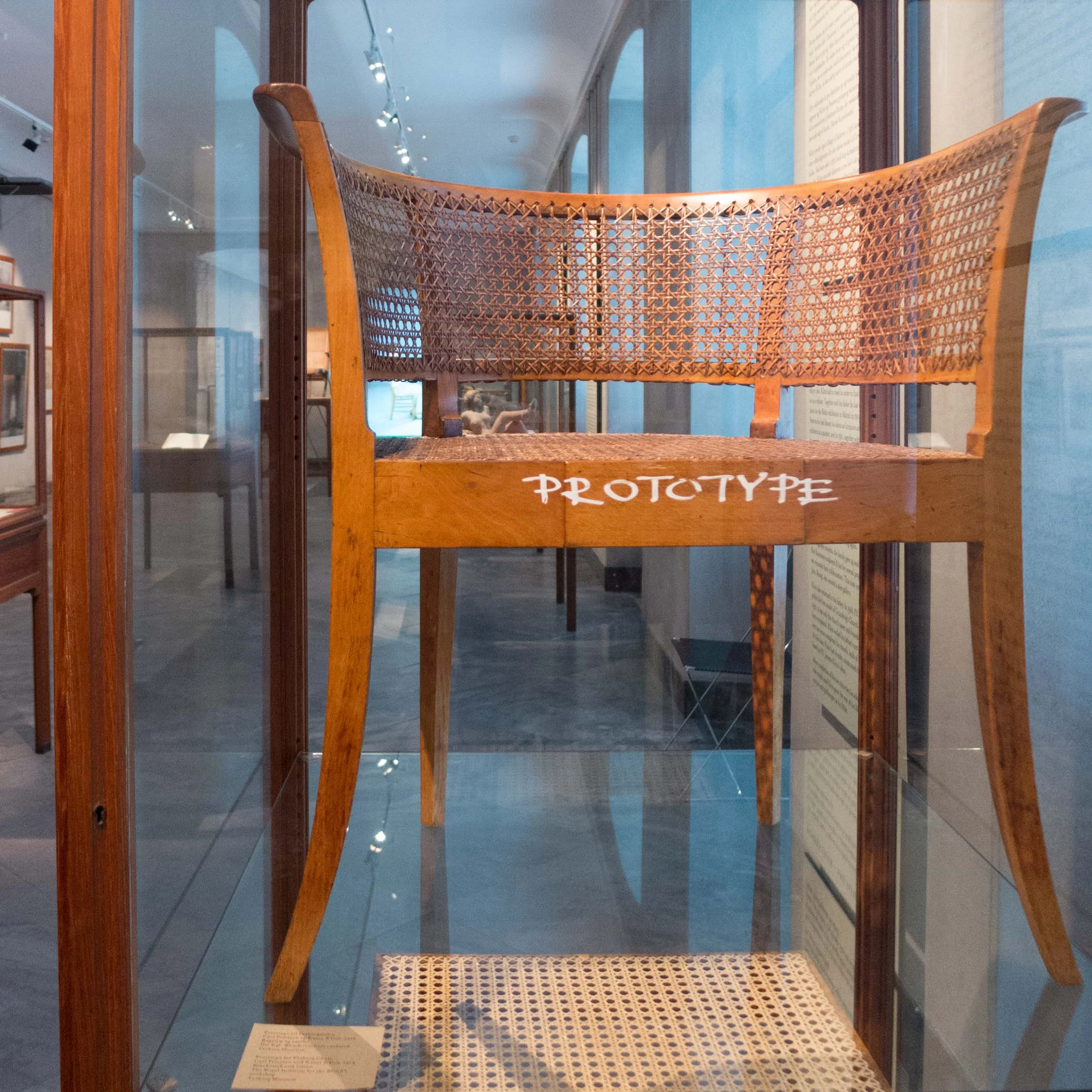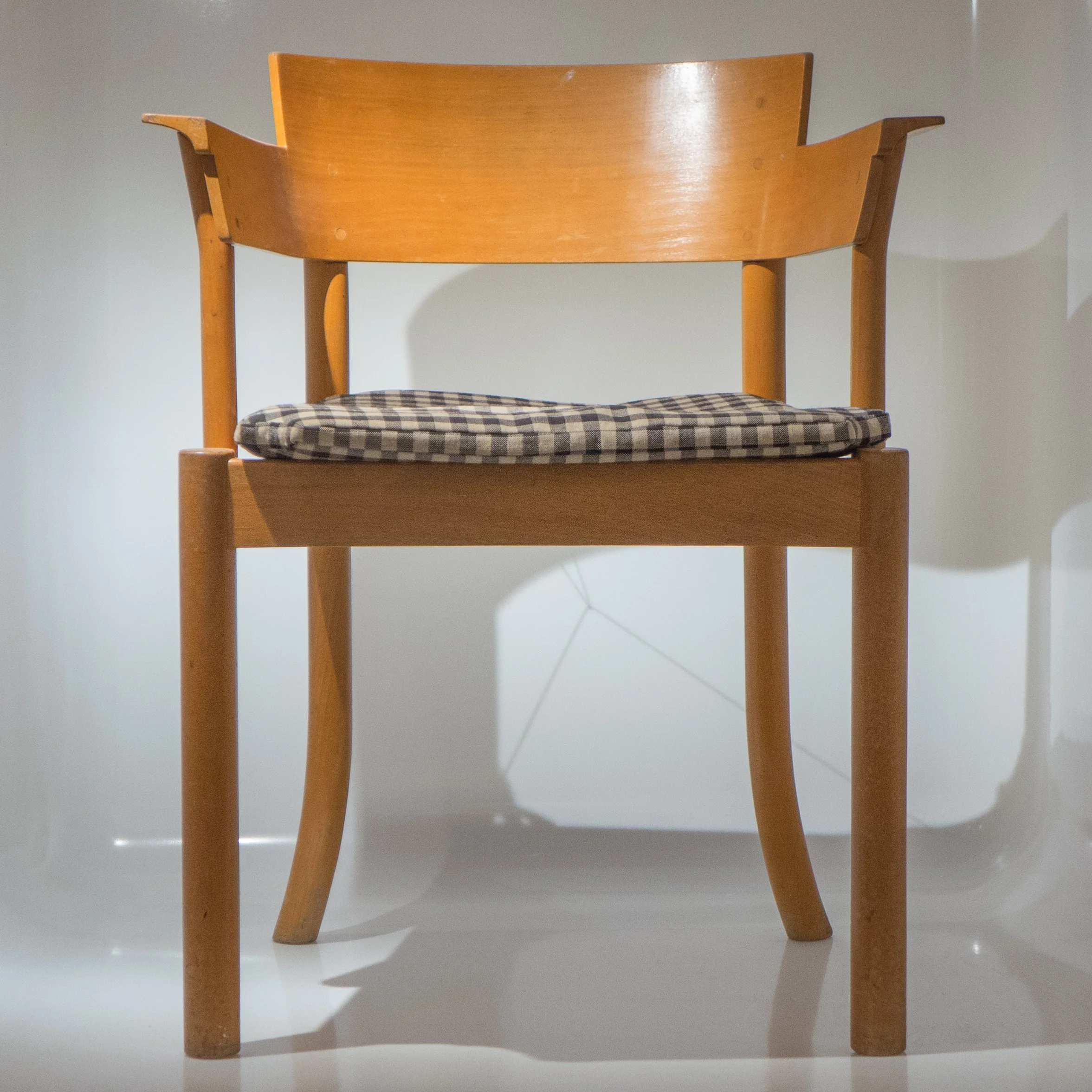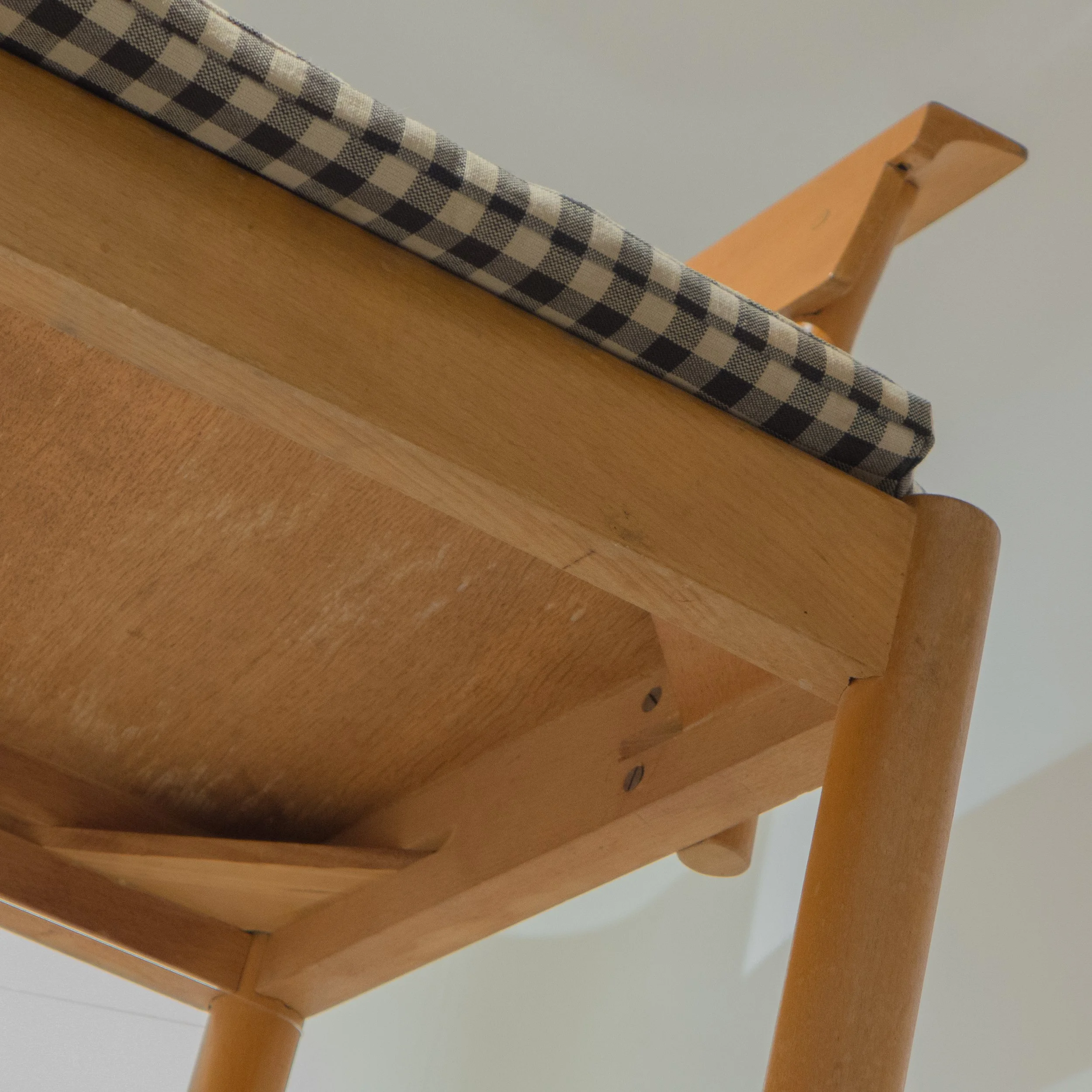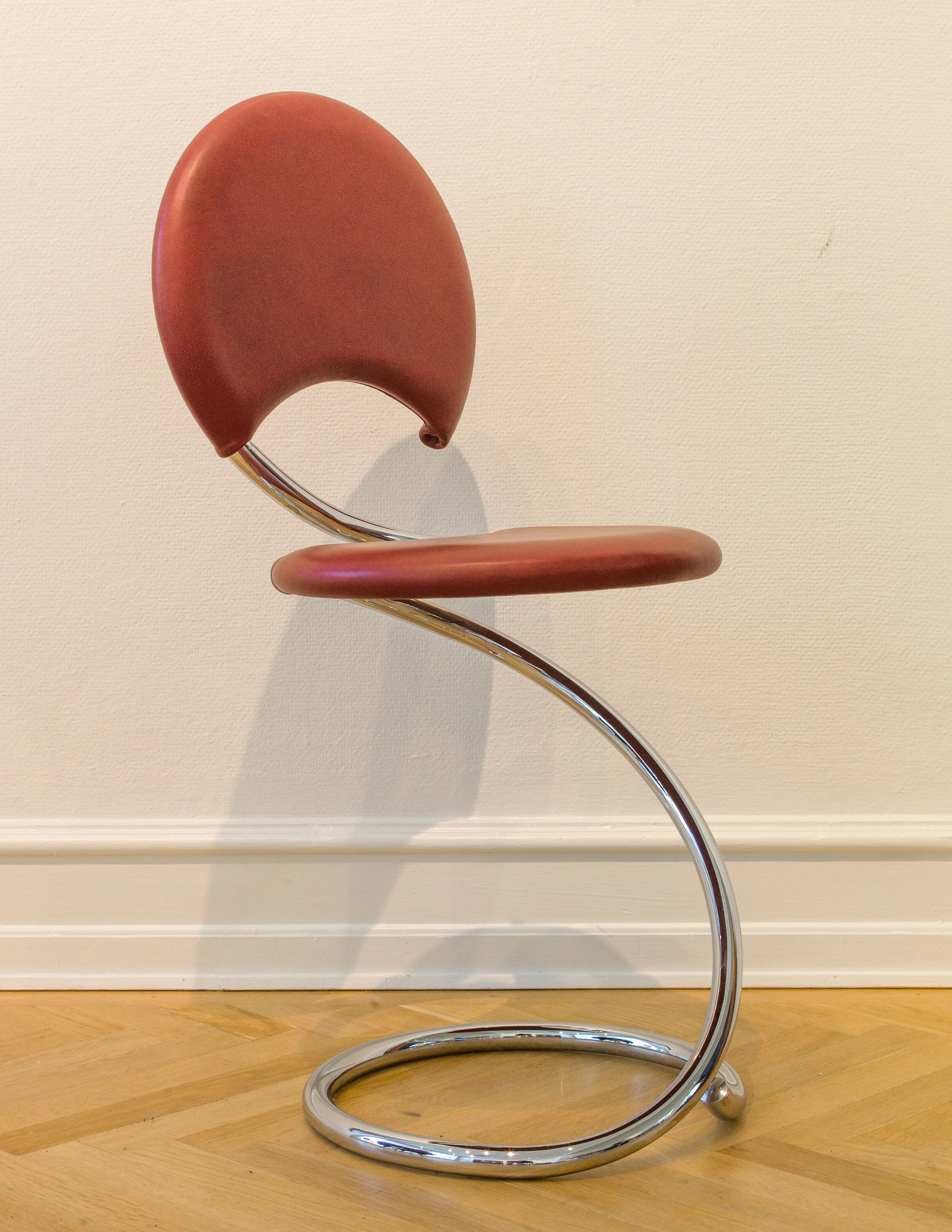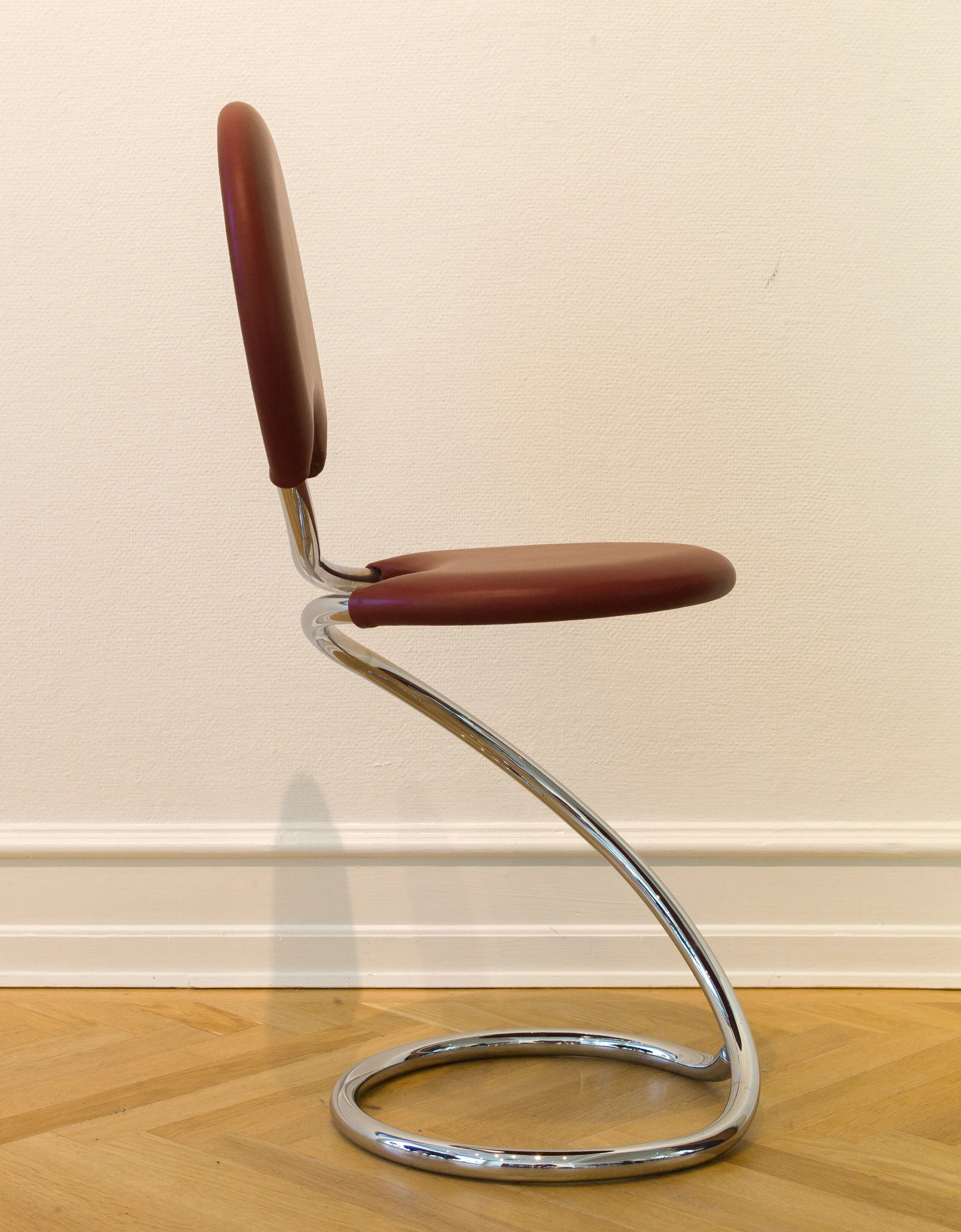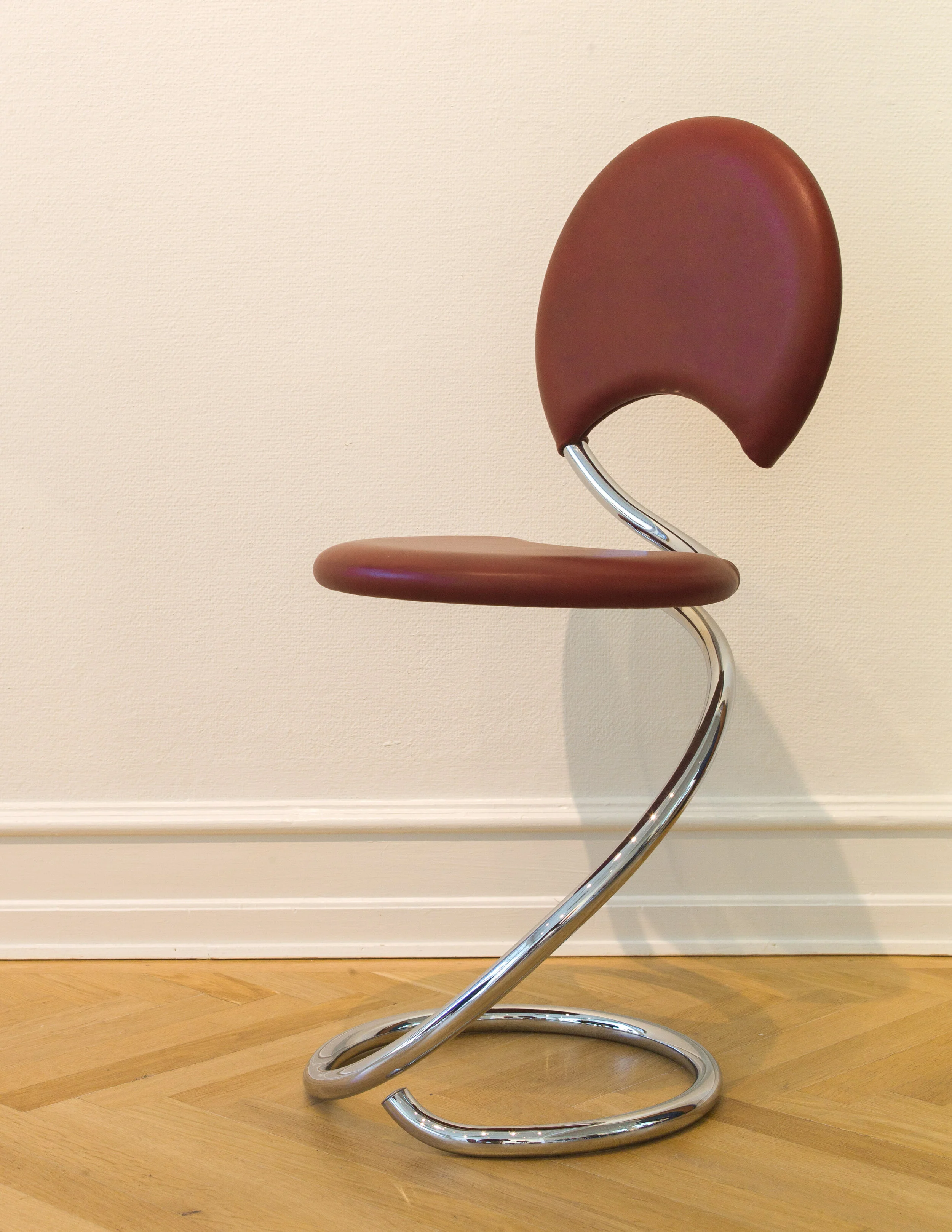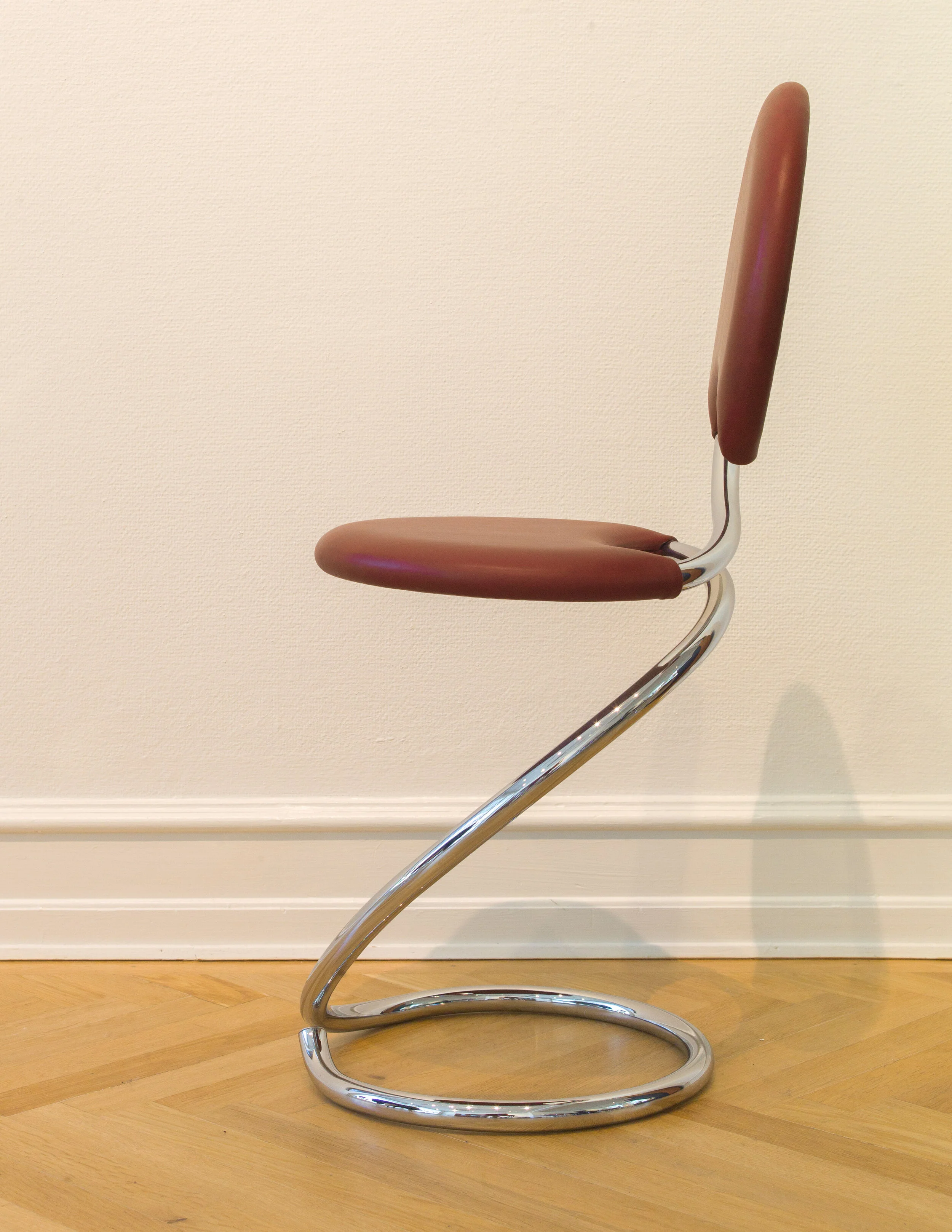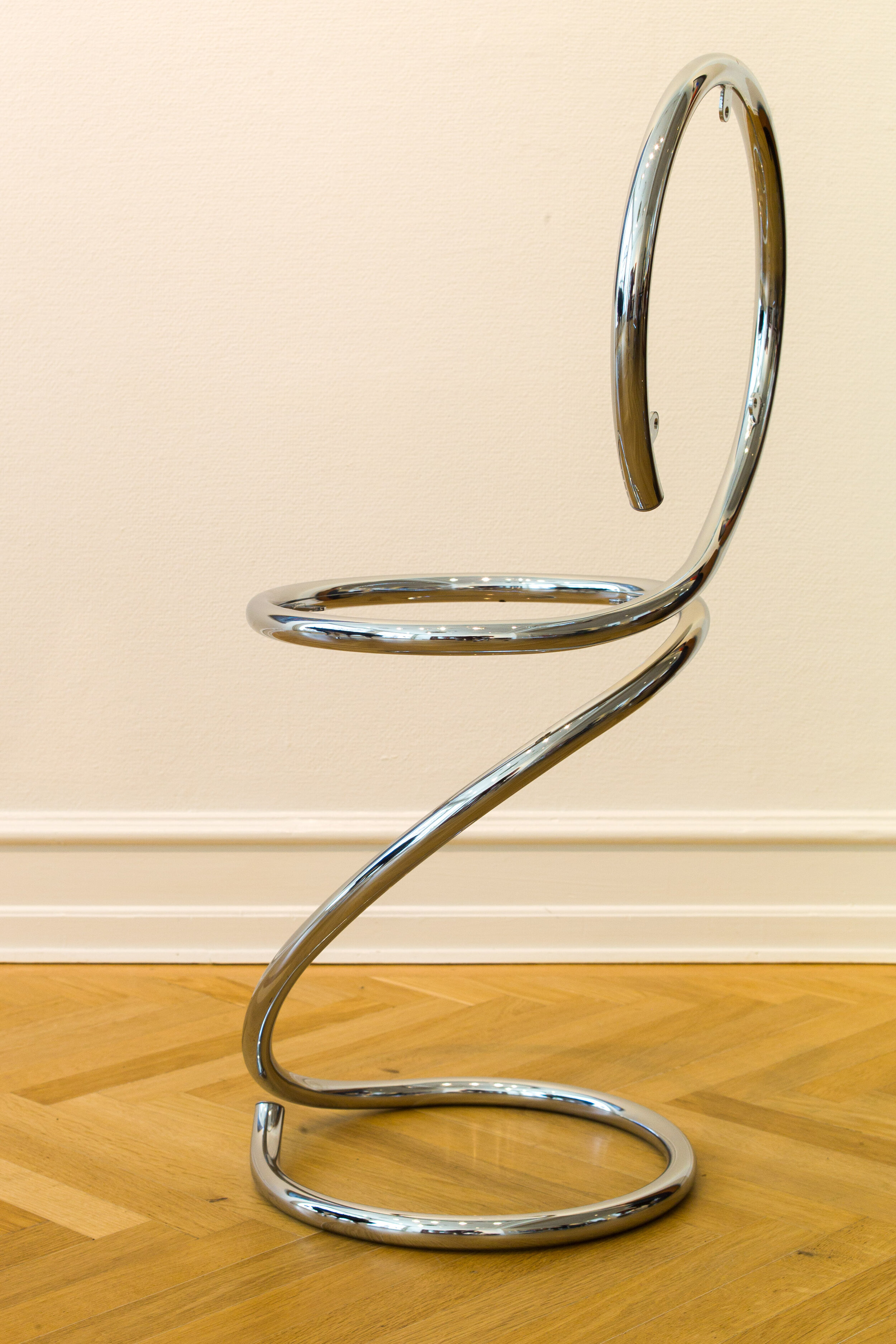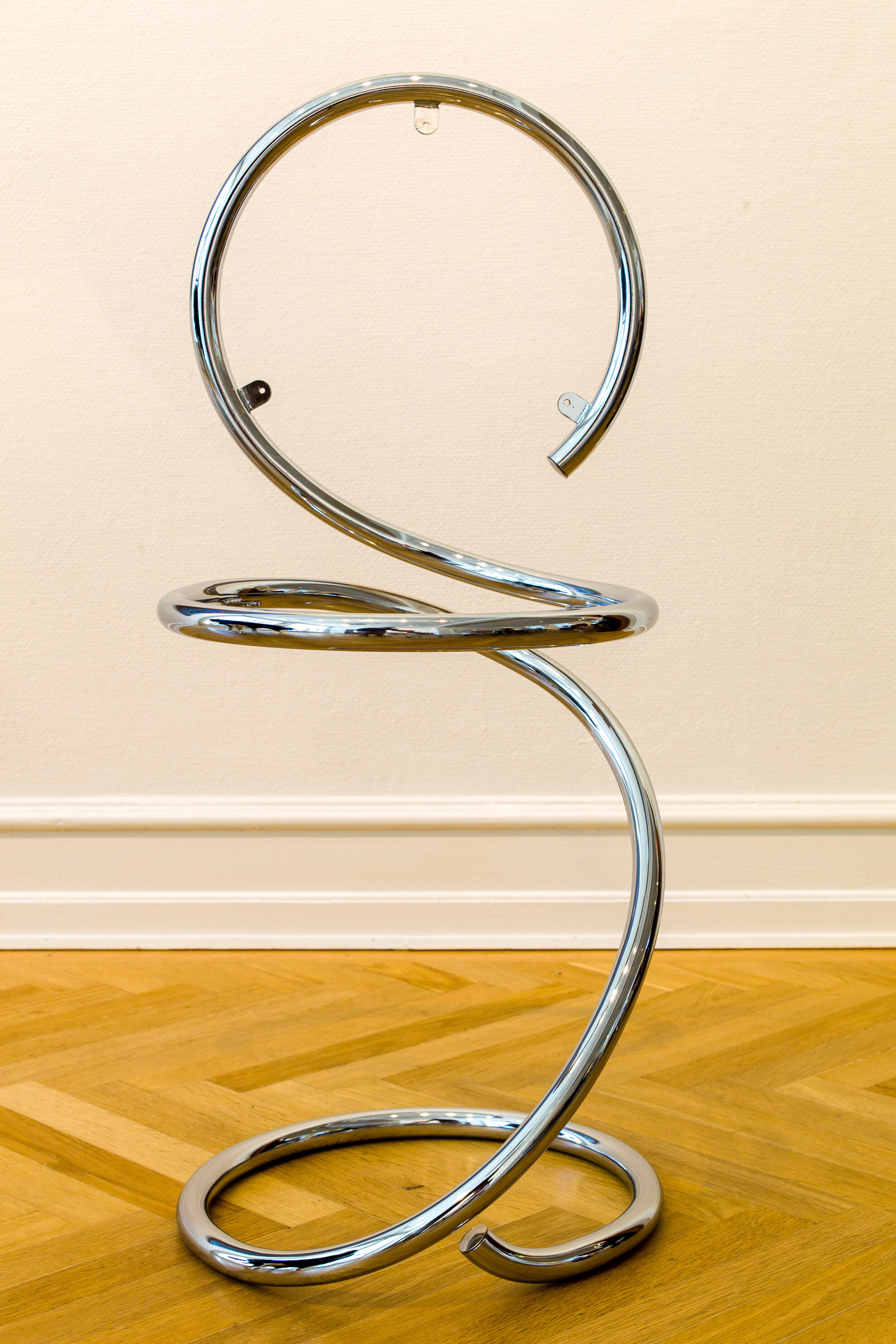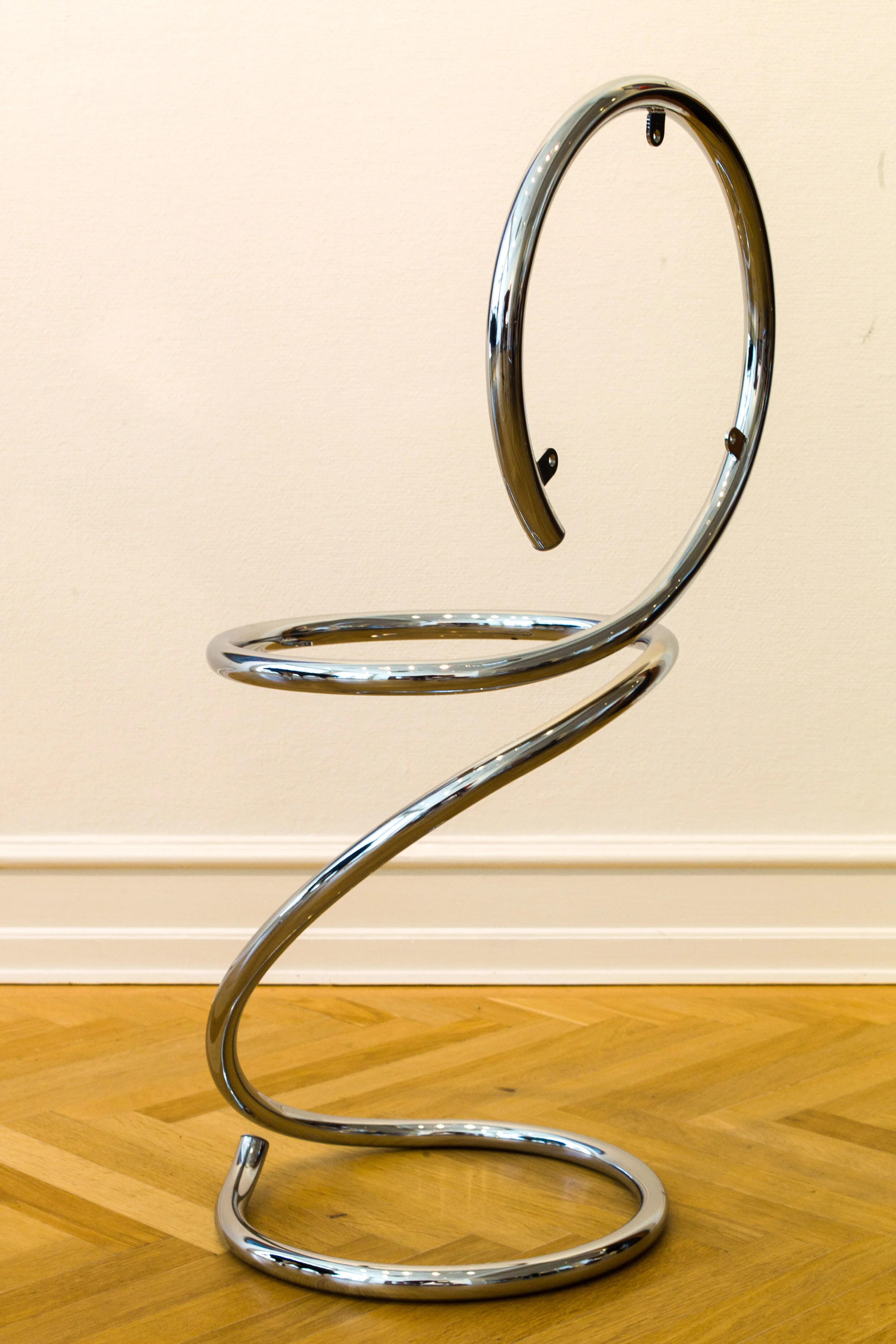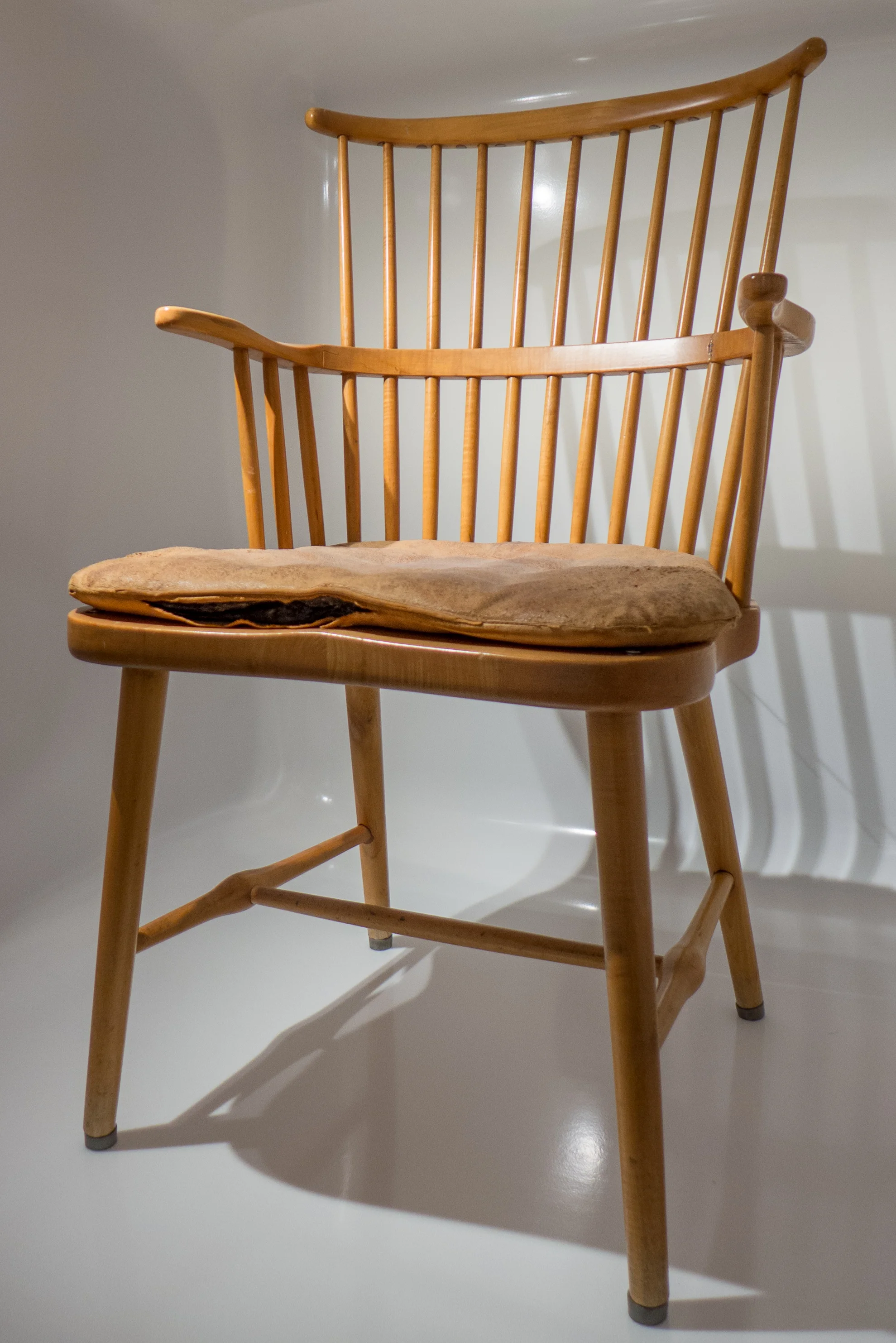Faaborgstolen / chair for the museum in Faaborg by Kaare Klint 1914
/Now, in many ways, this chair appears to be old fashioned - looking backward to earlier styles of furniture as a reinterpretation of an historic type of chair - but it should be seen to mark or define the start of a distinctly modern approach to furniture design.
Faaborg is a small town on the south coast of the island of Funen - just over 40 kilometres from Odense. A new museum there was founded in June 1910 to display the work of a group of artists known as the Funen painters and in 1912 it was the artists themselves who proposed that Carl Petersen should design a new gallery to be built along one side of the summer home and garden of Mads Rasmussen … a wealthy businessman who had made his fortune through canned food.
Petersen was a leading figure in the architectural movement known as New Classicism. That might sound like yet another or simply the next revival of a historic style but it was the architects of this group who instigated major changes as Danish architecture moved towards both Modernism and Functionalism. They included in their designs some of the features of classical architecture - so columns and cornices and mouldings inspired by classical buildings in Greece and Italy - but generally, and more important, they used an arrangement of identical rectangular windows across simple, regular and well-proportioned facades that provided an appropriate sense of order to new buildings of greater and greater length that were designed to exploit new structural forms possible when using concrete and a beam and post construction that normally dictated equally spaced bays. It was architecture that was, above all, rational and essentially mathematical … very much an intellectual exercise rather than to do with instinct or romanticism.
Kaare Klint joined Carl Petersen as an assistant in December 1913, as work on the new gallery started, and his first designs were for furniture for the archive - a room at the end of the sequence of new galleries with wide doors onto the garden. Drawings are dated February 1914 with designs for a sofa, bookcases, a bureau and chairs.
The first working drawings for this chair for the main gallery are dated June 1914 and then a small model and a full-sized prototype were made.
The starting point for the design was a Danish form of chair known as a Klismos that had first appeared in the late 18th century and was derived from ancient chairs that were depicted on classical vases and sculpture. The distinctive feature was the legs that had a marked curve between the seat and the floor - almost as if the legs are splaying or sliding out at the ground under the weight of the person - and with the back legs continuing up above the seat as posts to support a sharply curved back rest.
Klint designed a chair that was a distinct improvement on earlier designs and was certainly much lighter both in weight and appearance than many versions … designed to be light so that it could be moved around the gallery by any visitor so they could sit down directly in front of a painting to study the work.
photographs taken at Designmuseum Danmark in the major exhibition from June 2014 through to October 2015 on the work of Kaare Klint
in the exhibition the prototype, with out-turned front legs and vertical back posts, was shown with the footstool designed by Klint to also be used in the galleries at the museum
designed by: Kaare Klint (1888-1954)
made by: N M Rasmussen, Rud. Rasmussen and N C Jensen Kjær
oak, cane, leather
height: 72 cm
width: 56 cm
depth: 57 cm
height of seat: 43 cm
The Faaborg Chair is still in production
and is now made by Carl Hansen & Son
Klint acknowledged that Petersen had suggested changes to the design and implied that the most serious discussions were about the way that the top of the back rest should or should not curve outwards.
Key dimensions of the chair fit within the system of the classical mathematical proportion known as a Golden Section or, by extension, Golden Rectangles so the overall radius of the arc of the back and the height from the ground to top of the seat rail are the same dimension and are directly related to the overall width of the front of the seat as a Golden proportion. Such a precise mathematical framework must surely have come from teaching by Petersen - by then a leading architect of the New Classical architecture movement in Denmark.
A model for the new chair was made but does not survive - lost in a fire - but there is a photograph of the model and it shows an early stage in the development of the design. In that model, Klint proposed that the back posts should be continued up, above the line of the back rest, with a higher parallel but shorter rail with a panel or plaque in the void between the two horizontal rails and that echoed a tripartite subdivision of the front rail of the seat that, in an early version, broke forward for the centre third but in the final version was removed and replaced with a simple flat and flush line for the front rail of the chairs that were made for the museum.
There was another and more significant change. A full-sized prototype has front legs that curve outwards below the seat … not forward as was found with a Klismos type … but out to the sides and the back legs in that version were vertical. In the final version the front legs are vertical and the back posts are splayed or curved out below the seat but because the posts are set at 45 degrees, on the arc of the back rest, the curve or splays run out at an angle. It is this detail of the construction that gives the chair a lighter and more elegant and stylish form where four straight and perfectly vertical legs could well have looked severe and actually too narrow and therefore, visually at least, potentially unstable.
The seat of the chair and the back rest and sides had split cane, in part to keep the chair as light as possible and, in part, to keep the chair visually as light and open as possible so that they did not form a hefty and dominant feature of the gallery. It has also been said that the back rail was kept simple and horizontal, rather than with a slope down the arm rest, so that again it did not draw the eye and distract from the paintings. For the same reason the wood of the frame was given a soft natural finish rather than the heavy varnished or dark polished finish more usual at that period.
Kaare Klint and Poul Henningsen were related by marriage and Klint gave Henningsen the important commission to design lighting for the Design Museum although that did not prevent a certain amount of banter from Henningsen.
There is a well-known photograph from 1927 in Kritisk Revy, the journal Henningsen published, where he is balancing a chair from Thonet on an outstretched hand.
Years later - in 1962 - Henningsen explained that it was, in fact, a comment on Klint and the Faaborg chair:
"By making this chair five times as expensive, three times as heavy, half as comfortable, and a quarter as beautiful, an architect can very well win himself a name." He went on to say that he could not sit in the Faaborg chair "without becoming melancholy about the past. What pointed to the future in that chair was probably first and foremost thoroughly conceived and executed craftsmanship."
In English that is said to be damning with faint praise but actually the point about thorough conception and execution is a key to not only the subsequent work by Klint himself but is an important way to understand and appreciate the quality of modern Danish furniture both in design and through production.




